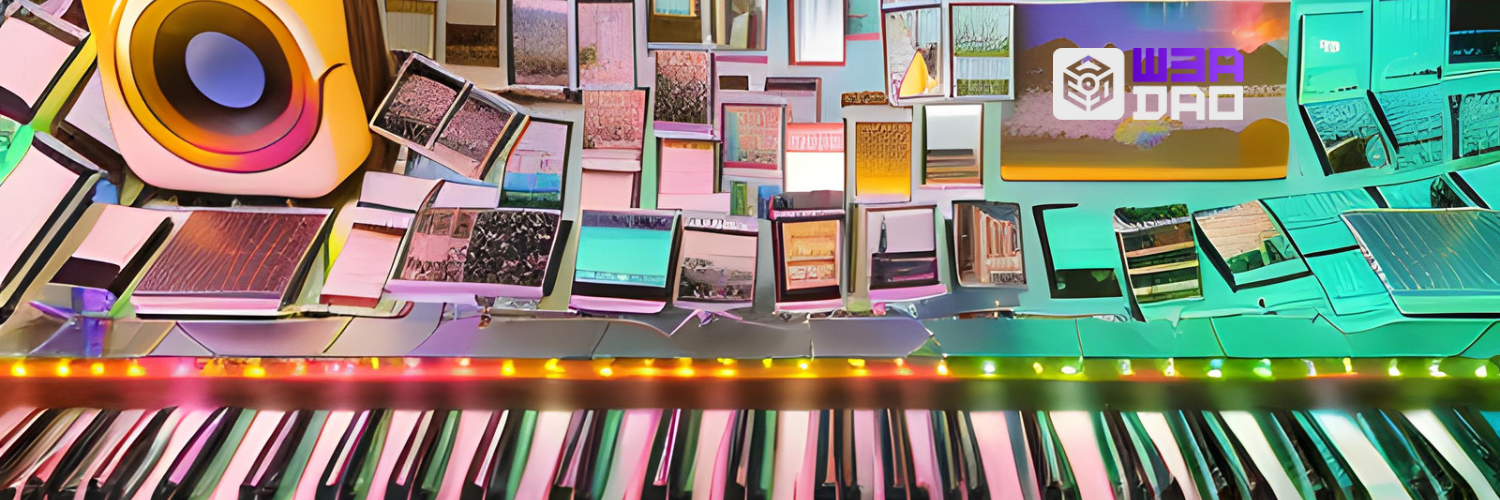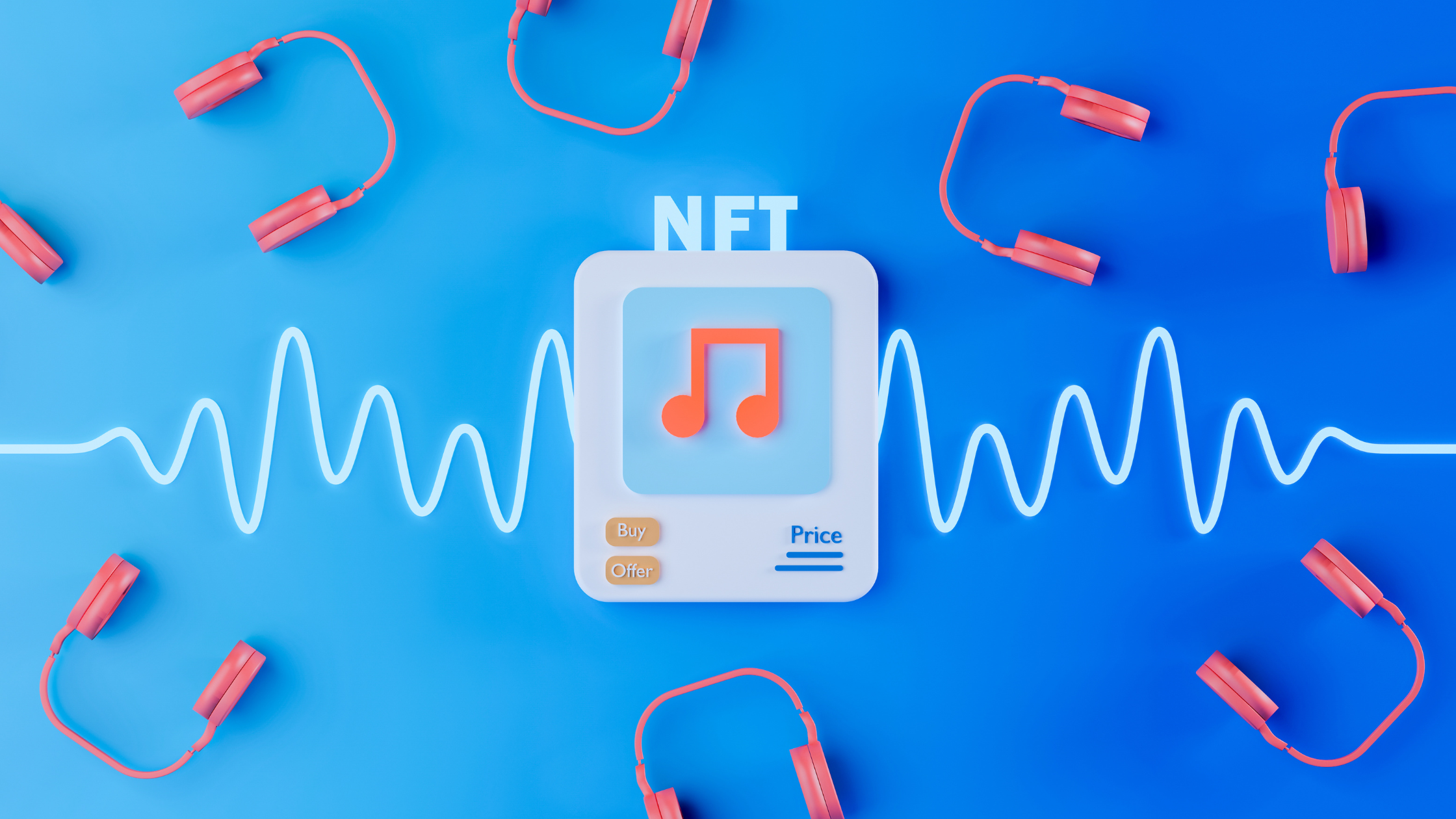
From Solar Beats to AI Treats: The Convergence of Music NFTs and Green Tech 🌍


Decentralized Energy Management Systems 🌿
A Green Blockchain Use Case
Solar panels & blockchain converge in decentralized energy systems, creating microgrids & transforming energy use🤯
How It's Done? 🔧
👉🏼 Homes are equipped with solar panels enabling them to generate their own energy, signifying a step towards self-reliance.
👉🏼 A blockchain-based energy management system (EMS) is installed concurrently, responsible for quantifying the energy inflow and outflow in the house.
👉🏼 The excess energy not consumed by the homeowners doesn't go to waste - instead, it's traded on the blockchain.
👉🏼There's also an option to bestow this surplus energy to a neighbor in the spirit of community cooperation.
What It Achieves? 🎯
👉🏼 Users gain immediate transparency in the process of consumption, management, and coordination with energy distributors.
👉🏼 They're part of a system where their actions directly impact, fostering a sense of ownership and awareness.
👉🏼 The transition to such a system is a paradigm shift - from passive consumers to active producers and traders of energy.
Broader Implications 🌐
👉🏼 Sicilian islands of Lampedusa and Favignana are actively using microgrids, illuminating their practicality.
👉🏼 The University of Palermo conducts trials to explore the benefits and efficiencies in urban settings.
👉🏼 In areas with limited access to electricity, these systems promise self-sufficiency and eco-balance.
In Summary 📝
👉🏼 Decentralised energy management systems represent a step towards self-reliance and green innovation, guiding us toward a greener future.💚🌿


🎶 Musicians: How to Harness the Power of Web3 and Make Lots of Money
Remember being a kid, strumming your first guitar or pounding on the keys of that hand-me-down piano? The thrill of creating music for the first time, the absolute magic of it?
Fast forward to now. You're a musician, pouring your soul into every note, every melody, ever hoping that your music will resonate with people.
The dream? To make a living doing what you love, to see your name in lights, to feel the connection with a crowd singing along to your songs.
The reality? It’s not that easy. It’s a struggle.
The music industry is a behemoth, and it feels like you're always at the mercy of record labels, streaming platforms, and concert promoters.
The lion's share of the profits? Not Yours, usually.
And then there’s this new buzzword floating around — Web3. You’ve heard about it, probably in passing, and your curiosity is piqued. Could this be the game changer? The key to unlocking the door to financial independence?
Well, hold onto your guitar picks, my friend, because this could be the rhythm change you’ve been waiting for. But just like learning to play an instrument, it's not going to be a walk in the park. There's a steep learning curve, but oh boy, the potential rewards could be music to your ears.
So listen up…
In this article, we'll be exploring the exciting ways that musicians can use web3 technology to generate income and take their careers to the next level. We are going to be talking about three Web3 technologies: streaming services, NFTs, and Web3 tools. So, grab your headphones, and let’s get started.

Streaming Services that Pay in Crypto
Gone are the days of meager streaming royalties. With web3 technology, musicians now have the opportunity to earn cryptocurrencies for their streams. Platforms like Audius and Musicoin allow users to listen to music and pay the artists directly in crypto.
Imagine getting paid in Bitcoin or Ethereum just for sharing your music with the world! Web3 streaming services not only provide a new revenue stream for musicians, but they also offer a more direct and transparent way for fans to support their favorite artists.
Here’s a little bit more on Audius and Musicoin:
Audius: Audius is a decentralized music streaming platform that gives power back to the artists. Unlike other platforms that take a large cut of the revenue and control the distribution, Audius lets artists upload, share, and monetize their music directly with their fans. Audius also rewards listeners for discovering and curating new music. With Audius, musicians can build a loyal fanbase, earn more income, and collaborate with other artists in a censorship-resistant way.
Musicoin: A cool platform that lets you stream music from indie artists for free, without any annoying ads. It also pays the musicians better than other streaming services, because it uses blockchain technology to cut out the middlemen and give them more control over their work. Musicoin is like a win-win for both listeners and musicians. You can discover new music, support your favorite artists, and even communicate with them directly on the app. If you're a musician yourself, you can upload your songs to Musicoin and get paid instantly every time someone plays them. Sounds awesome, right?
Embracing the Power of NFTs
Non-Fungible Tokens (tokens are digital “units of Value”), or NFTs, have taken the art world by storm, and musicians are jumping on the bandwagon too. NFTs allow artists to tokenize their music, creating unique digital assets that can be bought and sold on various marketplaces. By minting limited edition albums or exclusive tracks as NFTs, musicians can tap into a whole new market of collectors and enthusiasts. Plus, with smart contracts built into NFTs, artists can earn royalties every time their music is resold, providing a continuous revenue stream even after the initial sale.
Here are a few examples:
A rock band decided to release their latest album as an NFT, with each song having unique artwork and animation. They sold out in minutes, and fans were eager to own a piece of their history. The band also set up a smart contract that gave them 10% of every resale, ensuring that they would benefit from the secondary market.
A pop singer created an NFT of her unreleased single, which featured a collaboration with a famous rapper. She auctioned it off on a popular platform, and the bidding war was intense. The winner paid a hefty sum for the exclusive track, which also came with a personalized video message from the singer. The singer also received a royalty every time the track was played or transferred. Nifty, huh?
Unlocking the Potential of Web3 Tools
Beyond streaming and NFTs, web3 technology offers a plethora of tools and platforms that musicians can leverage to make money online. Cryptocurrency wallets like MetaMask allow artists to accept payments in various cryptocurrencies, opening up a global marketplace for their music. Decentralized finance (DeFi) platforms provide opportunities for musicians to earn passive income by lending their crypto assets or participating in liquidity pools. And don't forget about social media platforms like BitClout, where fans can invest in their favorite musicians' tokens, creating a unique bond between artist and supporter.
Here’s a little bit more details on these Web3 tools:
MetaMask is like a wallet that lets you use the internet in a new way. It holds your NFTs and lets you use them on supporting websites. You need to have some cryptocurrency—digital money—to buy and sell NFTs.
Decentralized finance, or DeFi for short, is a way of using money on the internet without having to go through a bank or a company. You can think of it like a big playground where everyone can play with their own money and make their own rules. DeFi can benefit musicians because it can help them get paid more easily and fairly for their music. For example, they can use DeFi to create their own digital tokens that represent their songs and sell them directly to their fans. Or they can use DeFi to join a pool of other musicians and share the profits from their music. DeFi gives musicians more control and freedom over their money and their music.
Web3 social media platforms are similar to Instagram and Fakebook (Sorry, I mean Facebook). BitClout is one example of a web3 social media platform where you can create your own profile and follow other people. But the difference is that you can also buy and sell tokens that represent your popularity or influence on the platform. These tokens are like digital coins that you can use to support your favorite creators or invest in new ones. For musicians, social media platforms like BitClout can be very beneficial because they can help them grow their fanbase, get more exposure, earn more money from their music, and interact more directly with their fans. Web3 social media platforms are like a new way of expressing yourself and connecting with others on the internet.
Making Money Online has Never Been Easier 💰
Whether you're a seasoned musician or just starting your career, web3 presents endless opportunities to monetize your music. The days of relying solely on traditional revenue streams are behind us. By embracing web3 tools, you can tap into a global audience, earn cryptocurrencies for your streams, and even create digital assets that hold long-term value. So, why wait? Dive into the world of web3 and start making money online today! 💜

If you find this newsletter valuable or interesting, then be sure to subscribe!
Get ready for your week by checking out all the upcoming events in the Web3 Academy community! Keep reading to find out more. 😁👇


AI Concepts to Take Us Into the Future
Uncovering the Secrets of Advanced AI Technologies
Artificial Intelligence (AI) is no longer just a sci-fi concept; it's an integral part of our daily lives. From digital assistants to recommendation systems, AI's influence is undeniable. Think of artificial intelligence (AI) as a super-smart computer system that can learn and make decisions like a human. Yes, it is imitating human intelligence processes by machines, especially computer systems, but there is so much more. In this article, we are going to explore the following:
The Types of AI based on capabilities
The Types of AI based on functionalities
Segmentation of AI
4 Types of AI, and
The 7 Branches of AI
Three types of Artificial Intelligence based on capabilities
As we all see, AI is rising in almost every imaginable sector.
But what we really need to explain is that AI can be divided into two segments: capabilities and functionalities. Let's look at how they are broken up by capabilities first.
Narrow AI: Also known as Weak AI, this type of AI is designed to perform limited tasks like facial recognition or voice command. An example of Narrow AI would be Siri or Alexa. They can respond to your voice commands, play your favorite music, or set reminders but can't go beyond their programmed tasks.
General AI: Also known as Strong AI, this type of AI can understand, learn, and apply knowledge across a broad range of tasks at a level equal to that of human intelligence. General AI exists only as a concept, as we're yet to build an AI with such capabilities.
Superintelligent AI: This is a hypothetical concept where an AI surpasses human intelligence in virtually all economically valuable work. This type of AI would not just understand or learn tasks like a human, but it would be able to apply this learning at an unprecedented speed and scale. It's a point of intense debate and speculation among AI researchers as it brings immense opportunities and existential risks.
Four types of Artificial Intelligence
On the other hand, let's examine the four types of Artificial Intelligence based on functionalities:

Reactive Machines: This AI operates only on present data, meaning it can't use past experiences to inform current decisions. It's designed to respond to specific situations and cannot learn from the past. Examples include IBM's chess-playing Deep Blue and Google's AlphaGo.
Limited Memory: Limited Memory AI, as the name suggests, can temporarily store past data and experiences. This AI learns from historical data to make decisions. It's commonly used in self-driving cars, which observe other cars' speed and direction and make decisions accordingly.
Theory of Mind: This type of AI is still in the experimental stage. The goal is to build AI that understands human emotions, beliefs, and thoughts and can interact socially like humans. This kind of AI will have its desires, beliefs, and intentions, which will help it understand and relate to humans better.
Self-aware AI: This is the most advanced type of AI, which is still theoretical and not fully realized. It is conceived as an AI that has evolved to the point where it has self-consciousness and awareness and can understand, interpret, and respond to the world similarly to a human being.
The seven branches of AI
Almost like a tree has branches, so does artificial intelligence. AI has several branches, as explained below. Their classification is based on the specific techniques and methodologies they employ. Below are some of the major branches:

Machine Learning (ML): This branch develops algorithms that allow computers to learn from data. It includes sub-branches like supervised learning, unsupervised learning, and reinforcement learning.
Neural Networks & Deep Learning: Neural Networks are systems inspired by the biological neural networks present in our brains. Deep Learning is a subset of Machine Learning that uses Neural Networks with many layers (hence "deep").
Natural Language Processing (NLP): This branch is focused on the interaction between computers and human language. It involves programming computers to process and analyze large amounts of natural language data.
Robotics: This branch involves programming computers to perform tasks in the physical world. This can include anything from simple repetitive tasks to complex problem-solving tasks.
Computer Vision: This branch focuses on enabling computers to interpret and understand the visual world. It involves extracting, analyzing, and understanding useful information from a single image or a sequence of images.
Knowledge Representation & Reasoning (KR&R): This branch focuses on representing information about the world in a form that a computer system can utilize to solve complex tasks such as diagnosing a medical condition or having a dialogue in a natural language.
Planning and Navigation: This branch enables an AI to achieve a specific goal most efficiently, such as navigating a self-driving car from one location to another.
Each of these branches includes various techniques and methodologies designed to solve specific problems or achieve specific goals within the broader field of AI.
Conclusion
As we delve deeper into the AI revolution, it's clear that the future of this technology is not just about developing more intelligent algorithms but also about ensuring these systems are transparent, ethical, and respectful of our privacy.
This article uncovered some of the AI concepts to take us into the future.
Types of AI based on capabilities.
Types of AI based on functionalities.
Segmentation of AI
4 Types of AI, and
The 7 Branches of AI
But this is only the tip of the iceberg. Just wait until you see what we have next week in Part 2 of the continuing saga of AI Concepts. 😊

🎯 Monday:
Web3 Academy Twitter Space
@ 4:00 pm UTC / 12:00 pm EDT
Join Web3 Academy on TwitterDAO All-Hands Meeting
@ 9:00 pm UTC / 5:00 pm EDT
Join the DAO DOers All-Hand Meeting
🎤 Wednesday:
Web3 News Chat—Weekly Rollup Podcast Prep in Web3 Academy Discord.
Anyone can join. See more info below👇
@ 3:00 pm UTC / 11:00 am EDT
Join Web3 Academy Discord
🧰 Thursday:
Web3 Academy LIVE on Twitter & YouTube streaming the Weekly News Rollup
@ 3:00 pm UTC / 11:00 am EDT
Watch Web3 Academy LIVE on Twitter or LIVE on YouTube
💜 Wednesday's Weekly Rollup- Podcast Prep
Join us on Wednesday morning at 11 AM Eastern time for the Web3 Academy team's Podcast News Rollup Prep.
This is a great opportunity to connect with the team, ask questions about the latest headlines, and contribute to our podcast. We value your insights and look forward to collaborating with you.
Discord Event Link: Join Web3 Academy Discord
🐥 Follow Us on Twitter!
Please follow us on Twitter Web3 Academy DAO and our members contributing to this week’s newsletter— @Yakuza, @CandyToyBoxYT1, @Borlokva, @19charles54
--- Thanks for reading! See you next Sunday!
Disclaimer: The information provided in this article is for informational purposes only and should not be considered legal or financial advice. Any reliance on the information provided is solely at your own risk.
